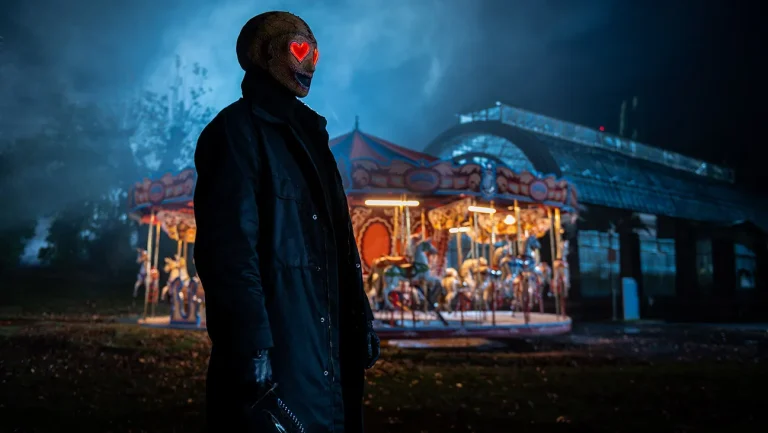From its clinical opening moments—a series of wide, indoor, static shots of a somewhat abandoned house in need of renovation—Harry Aspinwall’s feature film directorial debut, the coldly sparse chamber piece “The House Was Not Hungry Then” (2025), establishes the purely observational approach applied to its poltergeist horror story; an ominous sequence that not only displays the limited geography of the film’s single location, a coverage consisting of six different vistas (foyer, living room, first-floor corridor, stairs, second-floor hallway, main room) but also lulls the audience into a sedated state of passive witnessing, assuming the role of onlookers.
The timing of this film is rather incidental, to say the least, for the minimal restraint and unobtrusive detachment in terms of presentation feel like an economic cross-breed between the visual gimmicks of two very recent movies by high-profile filmmakers: Robert Zemeckis’ deeply flawed and tedious technical exercise “Here” (2024), a centuries-spanning film shot entirely from a single angle, and Steven Soderbergh’s experimental foray into horror, “Presence” (2024), a ghost story shot from the disembodied perspective of its specter.
In the particular case of this movie’s framing, the dispassionate point of view belongs to the titular building—a breathing, sentient being needing to be fed human flesh, which it gets with the help of its sleazy proprietor (Clive Russell) who lures people hoping to find a place they can call home, only for them to discover this one residence is already inhabited by something evil.
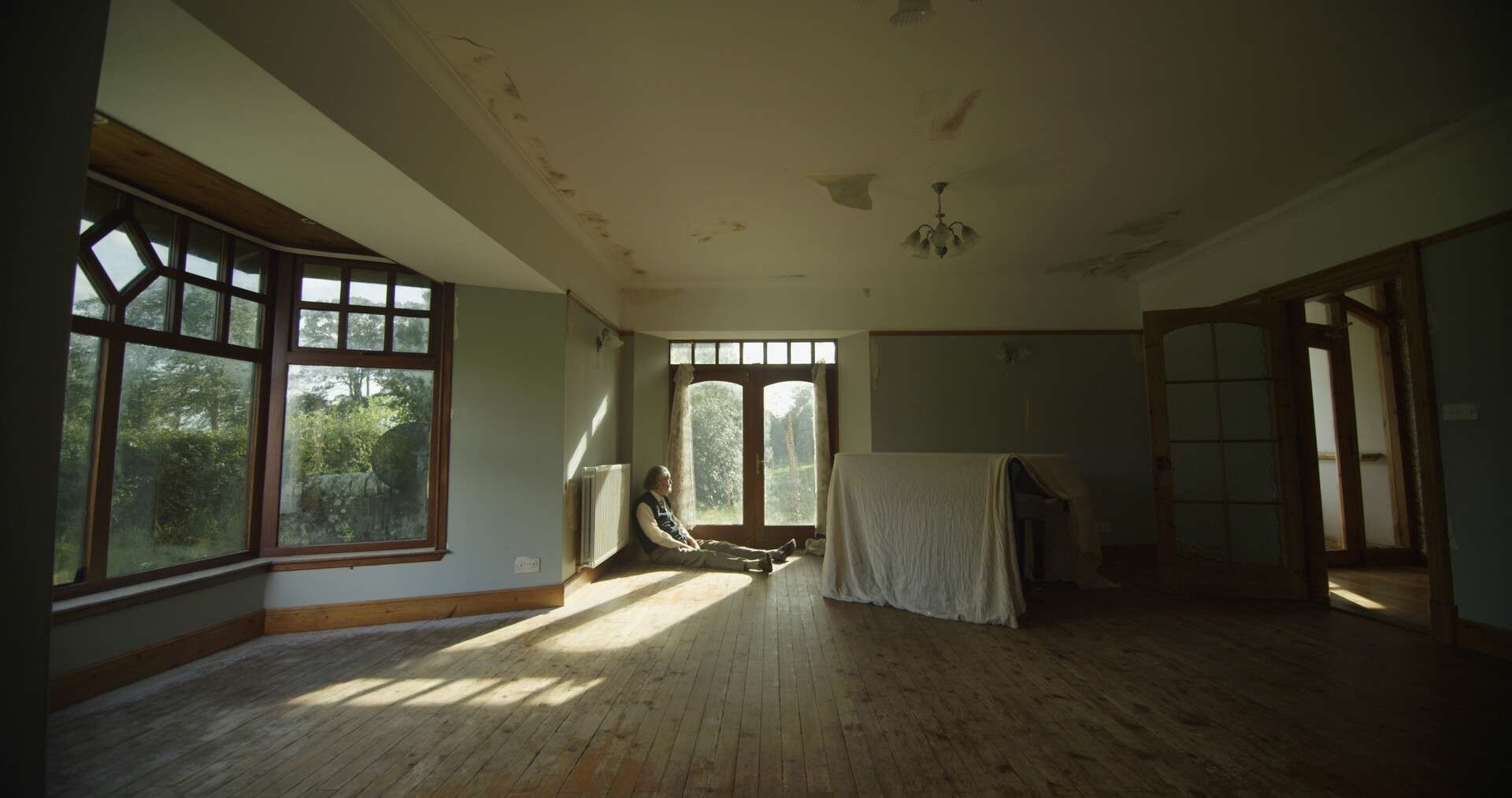
The first set of victims to unknowingly arrive at their tragic fate is a family of four who, on a characteristically rainy day, come all the way to these seemingly tranquil suburbs of England and enter the house. Despite it not being in perfect condition to move in right away, the place holds warmth from its golden days—there’s nothing a good refurbishing can’t fix, and this two-story house certainly has all the potential going for it. In any case, real estate agents have an ease at pitching any structural or ornamental weaknesses as features, rather than bugs. For them, there are no small domiciles, only cozy ones. Neither there is old-fashioned furnishing, just vintage home decor.
The realtor here, however, does not seem particularly interested in selling, though. He does not offer the typical guided tours through the inside of the property where they show you the spaces, highlight all the good things, and bombard you with ideas on the many possible layouts for each and every room, so you’re too busy picturing yourself living there and completely forget to closely examine any deficiencies hiding in plain sight. The man’s only real mission is to get the people to step inside and off into their deaths, like lambs to the slaughter. The house will take care of the rest.
The house’s modus operandi is rather simple. Once the potential buyers have crossed the entrance threshold and go their separate ways as they explore the place, a chilling soundscape reminiscent of some eerie white noise slowly builds up into a suffocating crescendo, akin to an empty stomach growling when it senses food around. After that, it doesn’t take long before we see the people disappear one by one right before our eyes. When the house is done eating, the estate agent comes in and clears out the rooms from any belongings left inside.
Also Read: 10 Great Psychological Thriller Movies You Can Stream on Hulu Right Now
The motionless cinematography by Stephen D. Grant is a double-edged sword. On the one hand, the fixed gaze allows for scenes to play out at their own rhythm, letting the actors move freely and organically through the empty spaces and forcing the viewer to remain still in the face of imminent danger, creating a menacing atmosphere that is engrossing. However, keeping the audience at arm’s length can also become incredibly uninvolving at times, especially when there are several shots that lead to nothing. Not to mention the recurrent cuts to the back that plague the runtime, and ellipses that hinder the flow of the narrative.
The main plot kicks into gear the moment a young woman (Bobby Rainsbury) comes to the property looking for her estranged father but finds out he is no longer living there. Upon realizing it is empty, she breaks in and spends the night. The arrival of this unexpected visitor triggers some interest in the house, for it knows her father was a tenant long ago, at a time when the house itself wasn’t ailing.
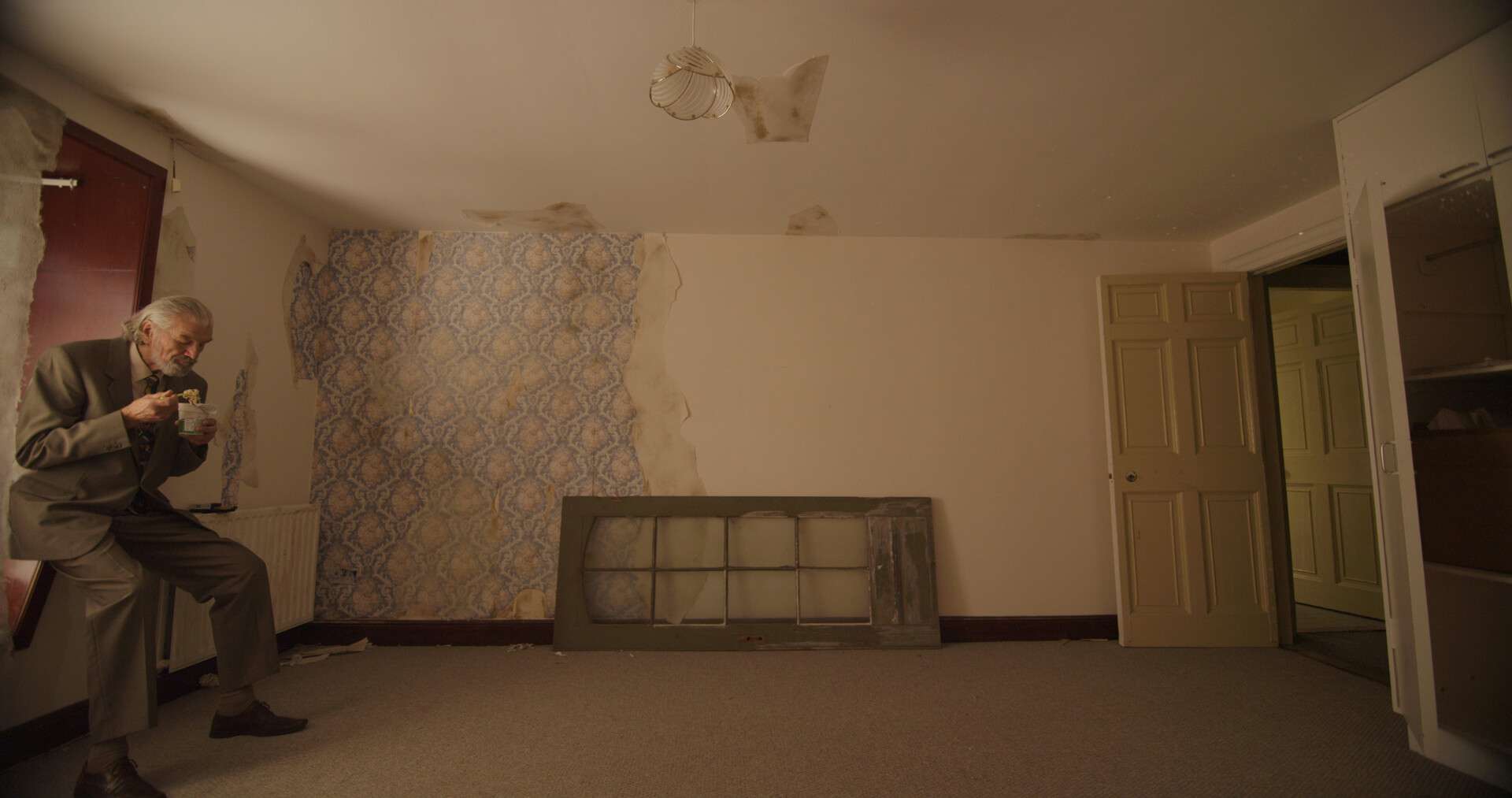
Whether we talk about auteur dramas like Stanley Kubrick’s psychologically unnerving “The Shining” (1980), family-friendly animated films such as Gil Kenan’s “Monster House” (2006), or television series like Ryan Murphy’s “American Horror Story: Murder House” (2011), haunted house stories—or any horror subgenre for that matter—always use its dreadfully terrifying creatures and petrifying apparitions as mirrors. And it is through the piercing and revelatory reflection that we come to clearly see ourselves, with all of our imperfections, and realize true darkness resides deep within ourselves, therefore understanding human beings are the real monsters all along.
To that end, the possessed house welcoming people in and posing as a safe and hospitable place where to form a family could signify the rottenness of society as a collective, down to the root where all stems from – the home as an institution. On a more individual level, it might refer to some of our worst tendencies of self-destruction. Its hunger is a symptom of an emotional void it tries to desperately fill with human touch and attention, however fleeting the satisfaction turns out to be before it feels hollowed out again. Akin to how we rather ignore our problems and numb our traumas than affront and try to solve them.
“The House Was Not Hungry Then” is too vague to make assumptions such as the aforementioned but is not hard to connect the visual gimmick and think it comments on the sense of normalcy with which we perceive horrifying things and the ways in which we have become desensitized and ultimately indifferent to the suffering of others. On a daily basis, we hear and observe injustices, from small micro-aggressions to bigger armed conflicts, and actively choose to ignore them. In real life, we are passive witnesses just like the house.


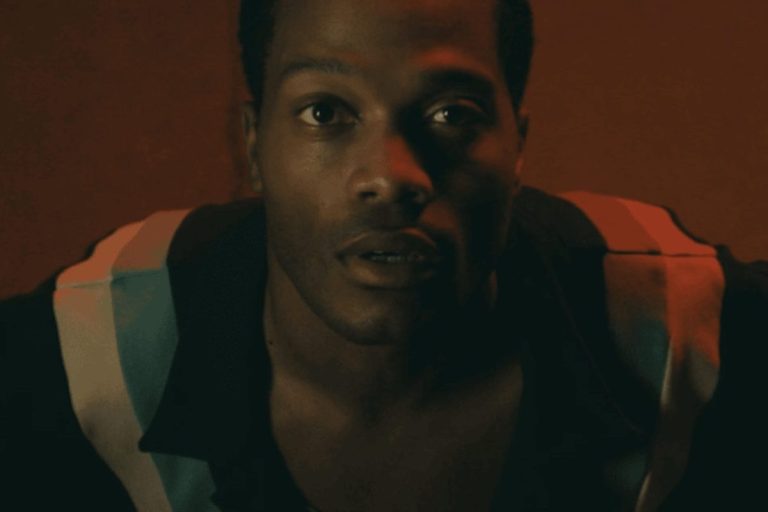
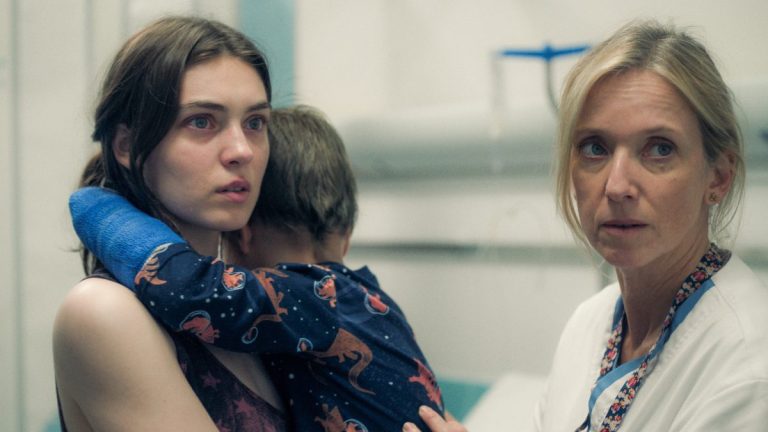
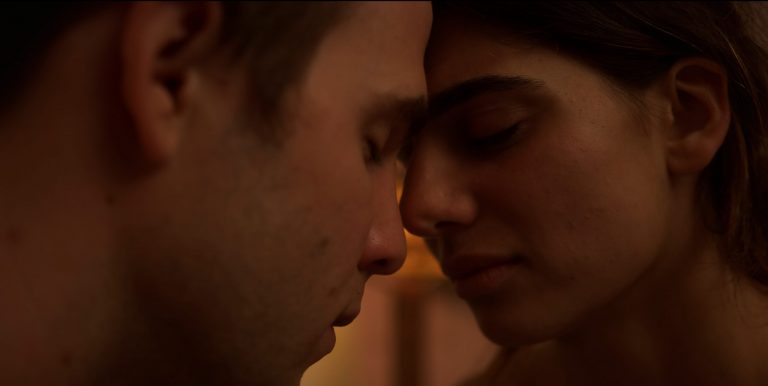
![Song To Song [2017]: The Fleeting Feeling Of Love](https://79468c92.delivery.rocketcdn.me/wp-content/uploads/2017/06/SONGTOSONG-768x333.jpg)
![A White, White Day (Hvítur, Hvítur Dagur) [2019]: ‘TIFF’ Review – A Cold Soul Longing for an Answer](https://79468c92.delivery.rocketcdn.me/wp-content/uploads/2019/09/A-White-White-Day-768x384.jpg)
